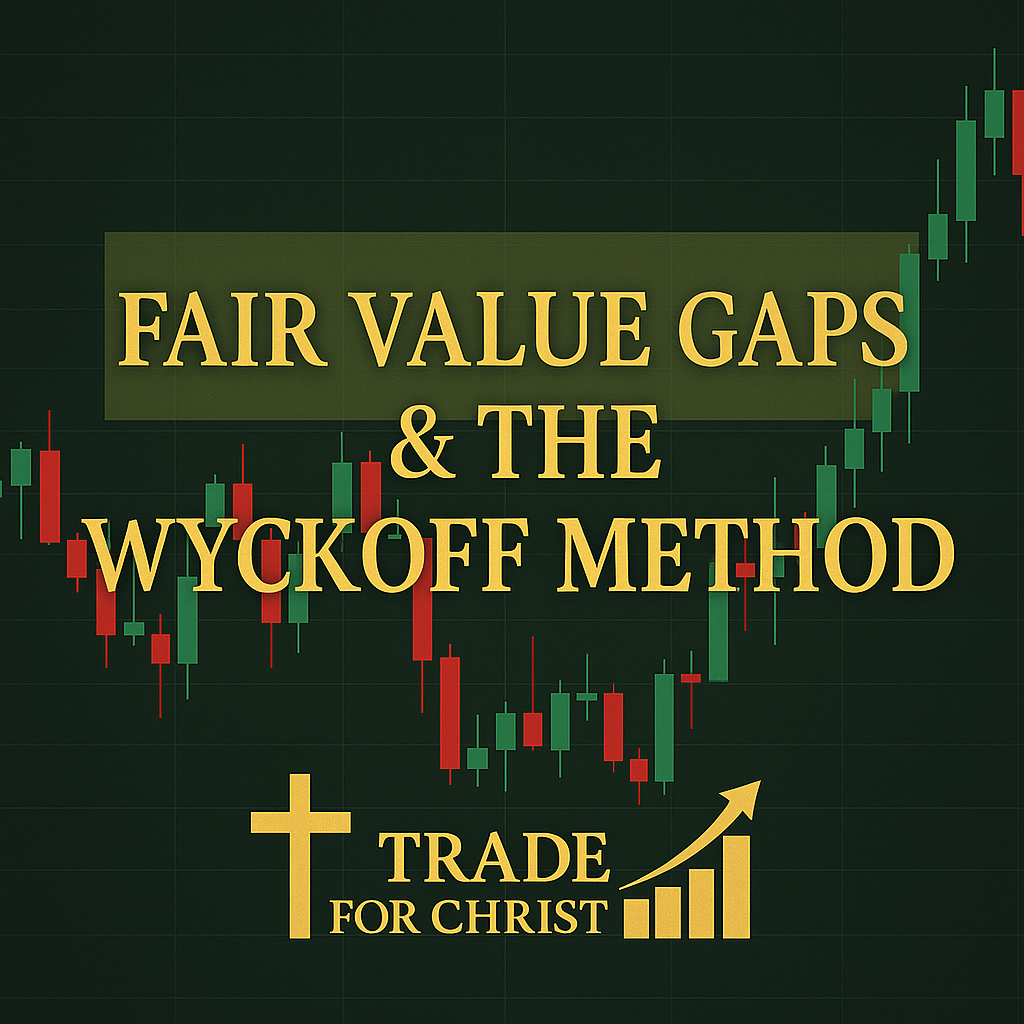For the trader who seeks true clarity in the market—not just fleeting setups but a sustainable edge—there is a powerful synergy to be found between Wyckoff theory and Fair Value Gaps (FVGs). Used separately, each offers insight. Used together, they provide structure, intent, and precision.
Wyckoff tells you where to trade. FVGs tell you when.
Wyckoff’s phases—accumulation, markup, distribution, markdown—map the story the market is telling. The Composite Man doesn’t enter randomly. He builds his position during quiet ranges, tests market conviction with fakeouts, and springs or upthrusts price to shake out the weak before making his real move. These ranges—accumulation and distribution—are your battlegrounds. If you learn to read them, you stop guessing and start positioning.
Within those ranges, you don’t need to take every candle or every signal. You wait. And this is where the Fair Value Gap becomes your scalpel. As price breaks out of a Wyckoff range—after a Spring in accumulation or a UTAD in distribution—it moves with aggression. This move often leaves behind a gap in price, a Fair Value Gap. That imbalance is not just a vacuum—it’s the fingerprint of intent.
When price returns to that FVG, you don’t just see an entry. You see alignment. You see that this isn’t random retracement. This is the Composite Man inviting entry into a larger story.
Let’s break it down:
Wyckoff gives you location—the area on the chart where smart money is operating. You mark your schematic: PS, SC, ST, Spring/Test or BC, AR, UT, UTAD.
FVG gives you timing—after the breakout or shakeout occurs, you wait for the market to revisit the imbalance it left behind. That’s your entry.
Confluence creates conviction—a Spring off a demand zone, followed by a breakout and FVG retrace? That’s a high-probability buy setup. A UTAD at a supply zone followed by a sharp drop and bearish FVG? Ideal short.
You are not chasing price. You are joining the narrative where the author left his signature.
Your stop goes outside the range or just beyond the FVG. Your target? Structure, the next imbalance, or the edge of the Wyckoff range. The risk-to-reward often exceeds 3:1. And because your entry is inside a clean gap that aligns with the broader market logic, your edge is not only technical—it’s rooted in the very fabric of institutional movement.
This combination—Wyckoff + FVG—forces you to slow down. To observe. To stop hunting and start harvesting. It separates gamblers from professionals. It turns charts into conversations.
And just like in the spiritual walk, when you tune your ear to the whispers of the Spirit, you no longer need to shout for direction. You see the setup forming. You recognize the intent. And you wait until the invitation is extended.
Then—and only then—you move with confidence.
You’re not entering based on emotion. You’re not hoping for movement. You’re executing on alignment.
This is how professionals trade. With rhythm. With readiness. With reverence for what the chart is revealing.
And that is how you turn a strategy into a calling.
-
Add a short summary or a list of helpful resources here.
